The Leibniz-IZW regular publishes press releases on key findings and insights from its research and on events, awards or personalia. The press releases are distributed directly to journalists on our press release distribution mailing list. Press releases are also disseminated through the distribution services Informationsdienst Wissenschaft, AlphaGalileo and EurekAlert. Are you interested in receiving our press releases directly via e-mail? In this case please send us an email to presse@izw-berlin.de.
Current press releases
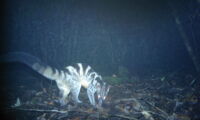
Surprising mammal diversity discovered in Bidoup Nui Ba NP
New surveys have revealed surprising mammal biodiversity in Bidoup Nui Ba National Park (Bidoup Nui Ba NP), a large protected area located in the southern part of the Annamites range. The presence of numerous rare and endangered mammals in Bidoup Nui Ba NP provides a ray of hope for the long-term conservation of Vietnam’s unique biodiversity.
Read more … Surprising mammal diversity discovered in Bidoup Nui Ba NP
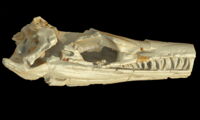
High-tech CT reveals ancient evolutionary adaptation of extinct crocodylomorphs transitioning from land to water
The tree of life is rich in examples of species that changed from living in water to a land-based existence. Occasionally, some species took the opposite direction. New insights into the anatomy of the inner ear of prehistoric reptiles, the thalattosuchians, revealed details about one of these evolutionary turning points. During the Mesozoic era, these now extinct crocodile relatives ventured into the ocean after a long semiaquatic phase. During this process, the skeleton of the thalattosuchians gradually adapted to the new pelagic habitat. In particular, the changes to the inner ear vestibular system of these reptiles enhanced their ability to swim. Compared to whales, which adapted quickly to life in water without a prolonged semiaquatic stage, this is a strikingly different evolutionary path for the same transition. These new findings of an international research team were made possible by the use of a Canon high-tech computed tomography (CT) scanner from the Leibniz Institute for Zoo and Wildlife Research (Leibniz-IZW). The results have been published in the „Proceedings of the National Acadamy of Sciences of the USA“.
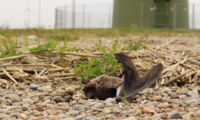
Wind farms in the Black Sea coast region could have a negative impact on bat populations in large parts of Eastern Europe
The Via Pontica, an important migration route for birds in Eastern Europe, runs along the Black Sea coast of Romania and Bulgaria. Bats also use this route. In this region, numerous wind farms have been installed in recent years because of good wind conditions, but there has been little implementation of the legally required measures for the protection of bats. A Romanian research team cooperated with the Leibniz Institute for Zoo and Wildlife Research (Leibniz-IZW) in Berlin to demonstrate that this leads to high death rates of migrating bats and potentially large declines even in populations living far away in other countries. The scientists therefore recommend the widespread introduction of turn-off times during the migration months, which - as the team was able to show in a local wind farm - would massively decrease bat mortality yet produce only a marginal loss in the energy production of the turbines.
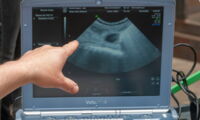
BioRescue Consortium performs most successful oocyte collection and embryo creation ever in southern white rhinos in the German Serengeti Park Hodenhagen
In order to prevent the extinction of species such as the northern white rhino, the BioRescue consortium is developing new methods and technologies for conservation. An important part of this work is basic research in cooperation with zoological institutions. This partnership has enabled the BioRescue team to continue working even during the Corona pandemic. On May 26, 2020, the team extracted oocytes from the southern white rhino female "Makena" in Serengeti Park in Hodenhagen, Germany, and then fertilized them in the Avantea laboratory in Italy to create four viable embryos. This was the team's most successful procedure of its kind and nourishes the hope that advanced assisted reproduction technologies (aART) are well established to ensure the survival of the northern white rhino in the near future.
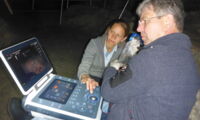
Ultrasound examinations provide new insights into the reproduction of the olm
Summary of an article in the "Volksstimme" (in German).
Only recently, Prof Thomas Hildebrandt (Head of the Department of Reproduction Management at the Leibniz-IZW) – together with Australian colleagues – was able to make a genuine new discovery on reproduction in the animal kingdom: They used ultrasound to show that swamp wallabies develop a new embryo before the birth of the previous offspring and thus show parallel pregnancies at different stages of development. Now, together with his colleague Dr Susanne Holtze, Hildebrandt showed previously unknown reproductive mechanisms also in olms: The fertilisation of the eggs of the rare amphibious cave dwellers takes place inside the female olm and the first developmental steps of the embryo occur already in the fallopian tube.
Read more … Ultrasound examinations provide new insights into the reproduction of the olm
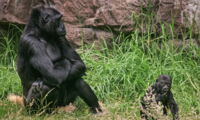
More than the sum of their genes – scientists call for a new perspective for population management of animals in zoos
Reproducing efficiently in captivity is crucial for the survival of many wildlife species, yet reproductive success is often lower than in the wild. Currently, many zoo population management strategies prioritise the genetic diversity of captive populations. Scientists now argue that a broader perspective is required which also includes behaviour, life-history, husbandry and environmental considerations. This would improve breeding success in zoos and the maintenance of the diversity of traits, behaviours, and phenotypes of threatened species. In a paper published recently in the scientific “Journal of Zoo and Aquarium Research” they compare different population management approaches and conclude that prioritizing genetic factors to the exclusion of all others may have detrimental effects: For example, in small groups of unrelated adults, conflicts are likely to be more frequent than in larger groups with relatives present who had the chance to develop differentiated socialisation and learning repertoires.
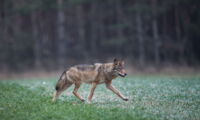
Habitat modelling and estimation of potential territory numbers reveal where wolves may live in Germany
Germany potentially provides many suitable areas for grey wolf territories. This means that wolves may potentially settle down in large parts of the country where they were extinct until around the year 2000. It should be expected that they will disperse through other areas not delineated as suitable as well. These are the results of a study conducted by the Federal Documentation and Consultation Centre on Wolves (DBBW), the Leibniz Institute for Zoo and Wildlife Research (IZW), the Technical University of Berlin, the Humboldt-Universität zu Berlin and the Research Institute for Wildlife Ecology (Vienna). The study was commissioned and published by the Federal Agency for Nature Conservation, Germany.
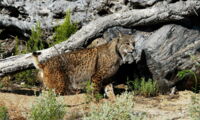
Conservation research on lynx:
Another piece of the puzzle about the longevity of the corpus luteum in lynxes has been uncovered. Scientists at the Leibniz Institute for Zoo and Wildlife Research (Leibniz-IZW) and the Leibniz Institute for Molecular Pharmacology (Leibniz-FMP) discovered that selected anti-oxidative enzymes, especially the enzyme superoxide dismutase (SOD2), may play an important role to maintain the unusual longevity of the corpus luteum in lynxes. It is highly likely that SOD2 not only detoxifies the reactive oxygen radicals in the cells, but also inhibits programmed cell death. The results were recently published in the scientific journal Scientific Reports of the Nature Group.

